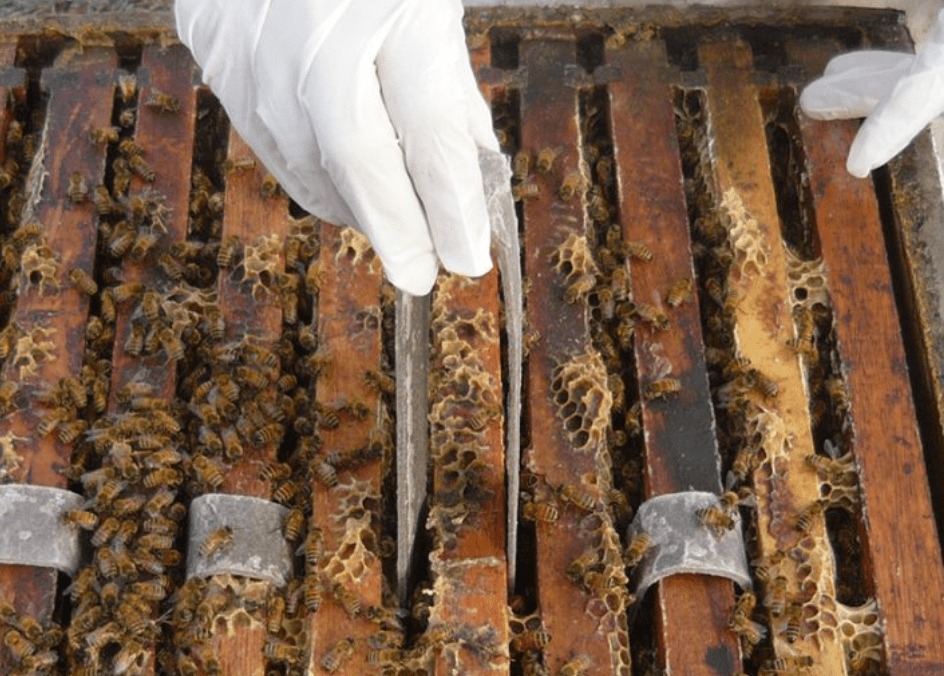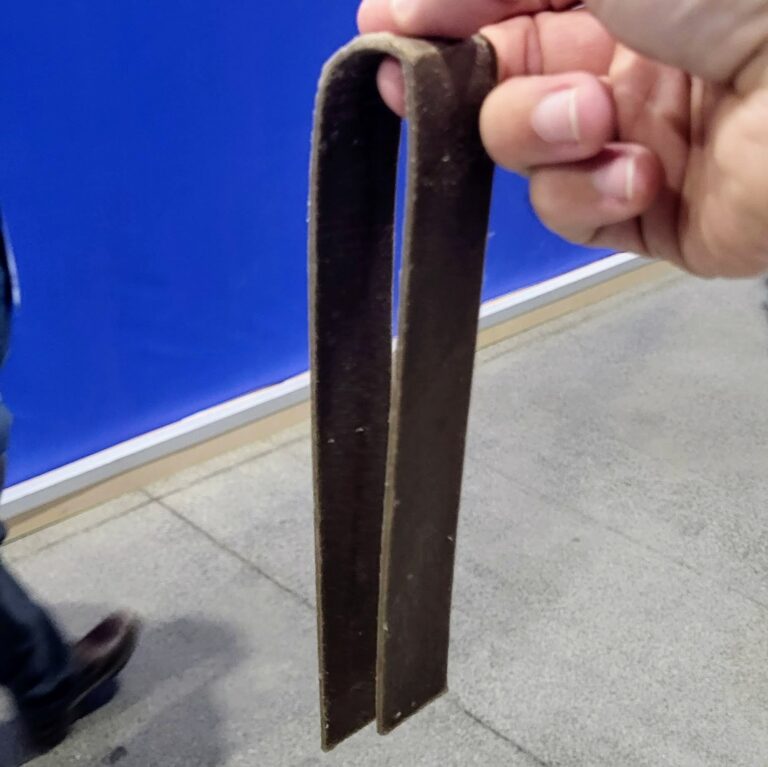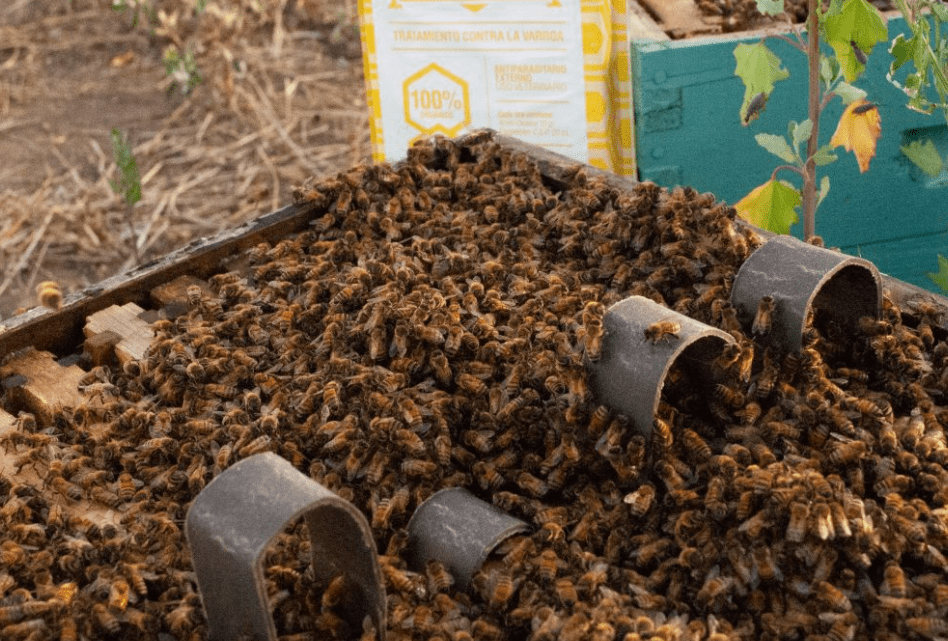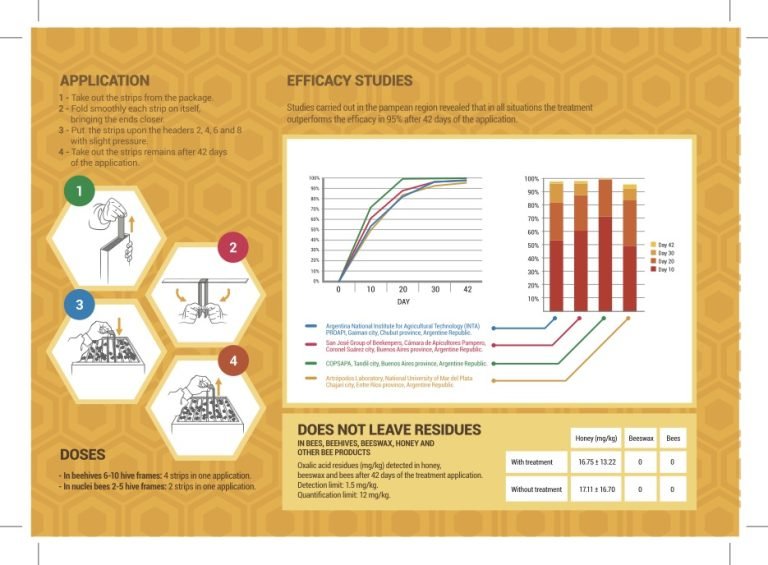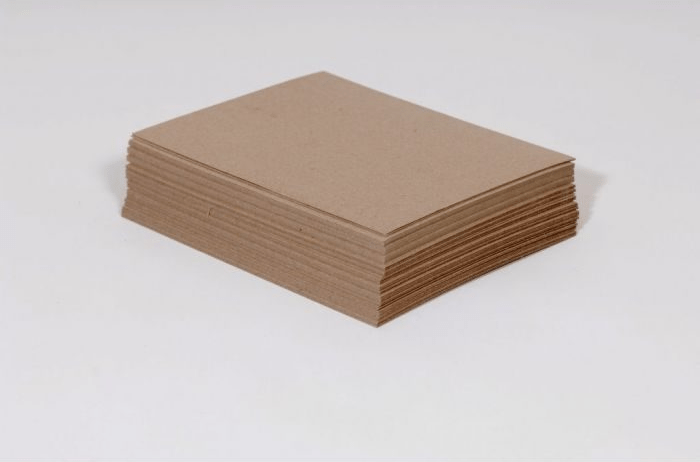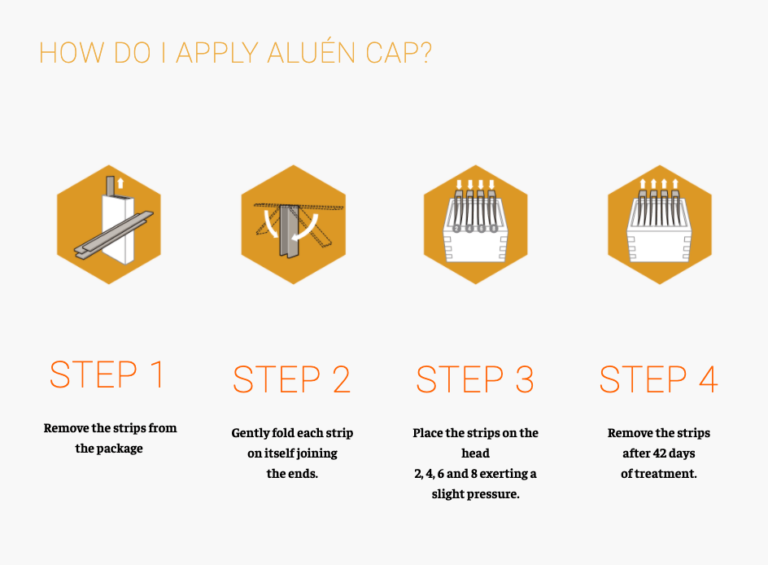

Aluen CAP is a new product that helps beekeepers get rid of Varroa Mites. Aluen Cap uses oxalic acid, which has been proven to be effective in killing Varroa Destructor and helping prevent many of the viruses that result from a Varroa Mite Infestation.
Aluen Cap may become an important tool for the beekeeping industry that wants to protect their honey bees control this deadly pest, and help increase colony health!
Aluén Cap may become an important tool for the beekeeping industry that wants to protect their honey bees control this deadly pest and help increase colony health!
This new varroa mite treatment was designed as an alternative to the standard synthetic acaricides used regularly by beekeepers.
Acaricides are substances that kill mites or ticks in the order of Acarina. The term is also used to refer to a class of pesticides that kill these parasites.
Varroa Destructor is the mite that plagues our European honey bees (apis mellifera) as opposed to Varroa Jacobsoni. Much of the research in developing acaricide treatments for mites is done by the major agricultural universities in the United States.
An interview with Jennifer Berry, Lewis Bartlett and Bob Binnie from the University of Georgia Honey Bee Research Center has sparked a lot of interest in Aluen Cap. It’s exciting to see new products possibly coming to market, but only after they have been approved by the EPA.
Aluen CAP is a new product that helps beekeepers get rid of Varroa Mites. Aluen Cap uses oxalic acid, which has been proven to be effective in killing Varroa Destructor and helping prevent many of the viruses that result from a Varroa Mite Infestation.
Aluen Cap may become an important tool for the beekeeping industry that wants to protect their honey bees control this deadly pest, and help increase colony health!
Aluén Cap may become an important tool for the beekeeping industry that wants to protect their honey bees control this deadly pest and help increase colony health!
This new varroa mite treatment was designed as an alternative to the standard synthetic acaricides used regularly by beekeepers.
Acaricides are substances that kill mites or ticks in the order of Acarina. The term is also used to refer to a class of pesticides that kill these parasites.
Varroa Destructor is the mite that plagues our European honey bees (apis mellifera) as opposed to Varroa Jacobsoni. Much of the research in developing acaricide treatments for mites is done by the major agricultural universities in the United States.
An interview with Jennifer Berry, Lewis Bartlett and Bob Binnie from the University of Georgia Honey Bee Research Center has sparked a lot of interest in Aluen Cap. It’s exciting to see new products possibly coming to market, but only after they have been approved by the EPA.
Table of Contents
Table of Contents
Why Is It Even Being Developed?
Why Is It Even Being Developed?
Varroa mites can build up a resistance to synthetic chemicals over time, so an alternative to these are needed. Not to replace the products on the market, but to supplement them.
There are several different organic acid or essential oil based products beekeepers use to kill varroa mites and help our bees (Apis mellifera). Apiguard, Api Life Var, Might Away Quick Strips (MAQS), Oxalic Acid, and Hop Guard 1,2 and 3 are all commonly used in the beekeeping industry, but do not work in all situations. The addition of Aluen Cap is likely not a silver bullet for honey bees, but it may be another tool that beekeepers can use in the right condition.
Varroa mites can build up a resistance to synthetic chemicals over time, so an alternative to these are needed. Not to replace the products on the market, but to supplement them.
There are several different organic acid or essential oil based products beekeepers use to kill varroa mites and help our bees (Apis mellifera). Apiguard, Api Life Var, Might Away Quick Strips (MAQS), Oxalic Acid, and Hop Guard 1,2 and 3 are all commonly used in the beekeeping industry, but do not work in all situations. The addition of Aluen Cap is likely not a silver bullet for honey bees, but it may be another tool that beekeepers can use in the right condition.
Still Testing Aluen
Still Testing Aluen
This formulation of the product is still being tested and developed by Cooperativa de Trabajo Apícola in Argentina and around the world and it is important to understand that it is not allowed to be used in the United States. The EPA has not authorized its use and there are not any authorized retailers in the US for the product.
It is important for the EPA to authorize the use of the treatment so that it can control the use and applications of the product on colonies. This is to keep our bees, environment and beekeepers safe so we can continue to use products with high efficacy rates into the future.
This formulation of the product is still being tested and developed by Cooperativa de Trabajo Apícola in Argentina and around the world and it is important to understand that it is not allowed to be used in the United States. The EPA has not authorized its use and there are not any authorized retailers in the US for the product.
It is important for the EPA to authorize the use of the treatment so that it can control the use and applications of the product on colonies. This is to keep our bees, environment and beekeepers safe so we can continue to use products with high efficacy rates into the future.
Twitter
LinkedIn
Facebook
Pinterest
Stumble
UponReddit
Twitter
LinkedIn
Facebook
Pinterest
Stumble
UponReddit
What Is Aluen Cap?
What Is Aluen Cap?
A new organic treatment based on oxalic acid is being evaluated for use with honey bees to control varroa mites in Argentina. Aluen Cap has cellulose material soaked in oxalic acid and then applied to active brood nests with or without the presence of brood.
It is considered an organic treatment with the varroa mite developing zero resistance to the acid. It does not kill any mites below the cell cappings. Formic Acid is the only acid that can do this.
A new organic treatment based on oxalic acid is being evaluated for use with honey bees to control varroa mites in Argentina. Aluen Cap has cellulose material soaked in oxalic acid and then applied to active brood nests with or without the presence of brood.
It is considered an organic treatment with the varroa mite developing zero resistance to the acid. It does not kill any mites below the cell cappings. Formic Acid is the only acid that can do this.
Where Is It Being Used Right Now?
Where Is It Being Used Right Now?
The product is being tested all over the world including Argentina, Uruguay, Mexico, New Zealand, Chile and France. Aluen Cap was designed in Argentina by de trabajo apícola pampero and is widely distributed in Argentina by retailers. It is not authorized for us in the United States as of August 2021.
The product is being tested all over the world including Argentina, Uruguay, Mexico, New Zealand, Chile and France. Aluen Cap was designed in Argentina by de trabajo apícola pampero and is widely distributed in Argentina by retailers. It is not authorized for us in the United States as of August 2021.
How Is It Made?
How Is It Made?
Aluen Cap is a cellulose strip, which means that it is a wood fiber. Paper towels are another type of paper board or cellulose strip, but Aluen is much more durable than a paper towel. The wood fiber is cut into long strips so they can be hung around and down both side of a frame.
So while the popular blue oxalic acid towel product is laid across the tops of frames, these strips will hang directly in the brood nest.
The cellulose strips are packed into a bag and filled with a hot, liquid Glycerin / Oxalic Acid solution. As the solution cools, the fibers soak in the solution for several days and are ready to be used in the colony.
As the product stands now, there are 15 doses of Aluen in a package and a dose is 4 strips. So a full dose is considered 4 strips per hive.
Aluen Cap is a cellulose strip, which means that it is a wood fiber. Paper towels are another type of paper board or cellulose strip, but Aluen is much more durable than a paper towel. The wood fiber is cut into long strips so they can be hung around and down both side of a frame.
So while the popular blue oxalic acid towel product is laid across the tops of frames, these strips will hang directly in the brood nest.
The cellulose strips are packed into a bag and filled with a hot, liquid Glycerin / Oxalic Acid solution. As the solution cools, the fibers soak in the solution for several days and are ready to be used in the colony.
As the product stands now, there are 15 doses of Aluen in a package and a dose is 4 strips. So a full dose is considered 4 strips per hive.
How Is Aluen Cap Applied?
How Is Aluen Cap Applied?
Aluen Cap is used in a similar way to apivar (active ingredient amitraz) strips. These long strips of Aluen Cap is hung over a frame, hanging on both sides of the frame in a brood nest. While Apivar treatments only use 1 strip per 5 frames of brood, Aluen Cap uses up to 4 strips per brood box.
Similar to apivar, the Aluen Cap strips are left inside the hive for 42 days to slowly expose the honey bees to the oxalic acid.
Over that 42 day period, the bees are walking over the strips and actively try to remove them from the colony. This is done naturally because it is a foreign object that can be moved and taken apart. In that 42 day period, there are 2 brood cycles so the oxalic acid can be exposed to 100% off the bees and mites in the colony.
Aluen Cap does not affect the mites underneath the cell cappings and will only effect the mites on the adult bees outside of the cells.
Aluen Cap is used in a similar way to apivar (active ingredient amitraz) strips. These long strips of Aluen Cap is hung over a frame, hanging on both sides of the frame in a brood nest. While Apivar treatments only use 1 strip per 5 frames of brood, Aluen Cap uses up to 4 strips per brood box.
Similar to apivar, the Aluen Cap strips are left inside the hive for 42 days to slowly expose the honey bees to the oxalic acid.
Over that 42 day period, the bees are walking over the strips and actively try to remove them from the colony. This is done naturally because it is a foreign object that can be moved and taken apart. In that 42 day period, there are 2 brood cycles so the oxalic acid can be exposed to 100% off the bees and mites in the colony.
Aluen Cap does not affect the mites underneath the cell cappings and will only effect the mites on the adult bees outside of the cells.
Is Aluen Cap For Sale?
Is Aluen Cap For Sale?
Aluen Cap is not for sale in the United States and can only be brought into the US under a specific exemption from the EPA. I’m sure there are companies that are trying to sell it and also DIY versions of the product available, but the Aluen product is not for sale.
We will update this page when more details are released on it’s availability.
Aluen Cap is not for sale in the United States and can only be brought into the US under a specific exemption from the EPA. I’m sure there are companies that are trying to sell it and also DIY versions of the product available, but the Aluen product is not for sale.
We will update this page when more details are released on it’s availability.
Can You Make Your Own Aluen Cap?
Can You Make Your Own Aluen Cap?
There is no stopping it; beekeepers are a group of people who like to run things their own way. As a group, beekeepers are often inventors, tinkerers, and problem solvers. They constantly see a problem and try to devise their own way of solving it. Even if the mouse trap has already been made.
Ever since Randy Oliver tested and published his own testing of the Oxalic Acid shop towel test for varroa mites, beekeepers were making and developing their own versions. The same is happening with Aluen Cap, even before the research. For some beekeepers who are making their own version, the fact that it can be done is reason enough.
Here is a published video of how beekeepers attempt to make their own Aluen Cap. To make it easier, we have attached the links to the products they have used in their experiments.
There is no stopping it; beekeepers are a group of people who like to run things their own way. As a group, beekeepers are often inventors, tinkerers, and problem solvers. They constantly see a problem and try to devise their own way of solving it. Even if the mouse trap has already been made.
Ever since Randy Oliver tested and published his own testing of the Oxalic Acid shop towel test for varroa mites, beekeepers were making and developing their own versions. The same is happening with Aluen Cap, even before the research. For some beekeepers who are making their own version, the fact that it can be done is reason enough.
Here is a published video of how beekeepers attempt to make their own Aluen Cap. To make it easier, we have attached the links to the products they have used in their experiments.
These three products below are the latest materials used by Randy Oliver to create a long-exposure Oxalic Acid treatment. The absorbent pads are the Maximizer pads, GPC100S, whichhave had good results with Randy Oliver’s research.
These three products below are the latest materials used by Randy Oliver to create a long-exposure Oxalic Acid treatment. The absorbent pads are the Maximizer pads, GPC100S, whichhave had good results with Randy Oliver’s research.
What Are The Possible Advantages Of Using Aluen Cap?
What Are The Possible Advantages Of Using Aluen Cap?
Compared to synthetic miticides like Apivar, Aluen strips use an organic acid which mites have a much more difficult time building up a resistants to it. This is a major long term advantage to it.
Another advantage is that it only requires 1 visit to the colony for treatment for application. After 42 days, any remaining strips should be removed from the colony as a good practice for not overexposing bees or mites to the active chemical oxalic acid. Oxalic acid is naturally found in honey, so using a natural ingredient is a positive compared to other treatment types. If the product is able to be used effectively during the spring, summer, winter and honey flow that would provide a lot of flexibility for beekeepers.
When new products for varroa mites come to market, it can be very exciting and at first glance it looks like there are not any draw backs. If this were the case, we wouldn’t have new varroa mite products coming to market every few years.
It’s good to be excited about the advantages, but i’m also excited to see all the negatives and get a full picture of how it can be used by beekeepers.
Compared to synthetic miticides like Apivar, Aluen strips use an organic acid which mites have a much more difficult time building up a resistants to it. This is a major long term advantage to it.
Another advantage is that it only requires 1 visit to the colony for treatment for application. After 42 days, any remaining strips should be removed from the colony as a good practice for not overexposing bees or mites to the active chemical oxalic acid. Oxalic acid is naturally found in honey, so using a natural ingredient is a positive compared to other treatment types. If the product is able to be used effectively during the spring, summer, winter and honey flow that would provide a lot of flexibility for beekeepers.
When new products for varroa mites come to market, it can be very exciting and at first glance it looks like there are not any draw backs. If this were the case, we wouldn’t have new varroa mite products coming to market every few years.
It’s good to be excited about the advantages, but i’m also excited to see all the negatives and get a full picture of how it can be used by beekeepers.
Is It Effective Against Varroa Mites?
Is It Effective Against Varroa Mites?
Testing is still being done and results from testing in the US have yet to be published. Results from other tests across the world range from effectiveness of 82% in New Zealand to 99% in Mexico. Because of its long application like Apivar, Aluen Cap is capable of being exposed to mites as they hatch out of the cells with young bees. The average efficacy from the trials was 95.89% and the average efficacy was the same in all environments.
This is a preferred treatment method compared to the standard Oxalic Acid treatments that are considered flash treatments and only kill the phoretic mites. Phoretic mites are the mites that are outside of the cell and on the actual bee. Roughly 70% of the mites in a colony are in a capped cell and flash Oxalic Acid treatments can not kill that 70% of mites. So you can see the advantage of a longer exposure using Aluen Cap.
Testing is still being done and results from testing in the US have yet to be published. Results from other tests across the world range from effectiveness of 82% in New Zealand to 99% in Mexico. Because of its long application like Apivar, Aluen Cap is capable of being exposed to mites as they hatch out of the cells with young bees. The average efficacy from the trials was 95.89% and the average efficacy was the same in all environments.
This is a preferred treatment method compared to the standard Oxalic Acid treatments that are considered flash treatments and only kill the phoretic mites. Phoretic mites are the mites that are outside of the cell and on the actual bee. Roughly 70% of the mites in a colony are in a capped cell and flash Oxalic Acid treatments can not kill that 70% of mites. So you can see the advantage of a longer exposure using Aluen Cap.
Does It Leave A Residue In The Hive?
Does It Leave A Residue In The Hive?
Based on the research of strips left in the hive for 42 days, the oxalic acid left in the hive was not noticeable compared to the untreated hives. The level of naturally found oxalic acid in honey was the same for both the control hives (untreated) and treated hives.
There were not any residues found in the honey, on the wax or on the bees. Aluen Cap is a slow release oxalic acid treatment and should not leave any residues in the hive.
Based on the research of strips left in the hive for 42 days, the oxalic acid left in the hive was not noticeable compared to the untreated hives. The level of naturally found oxalic acid in honey was the same for both the control hives (untreated) and treated hives.
There were not any residues found in the honey, on the wax or on the bees. Aluen Cap is a slow release oxalic acid treatment and should not leave any residues in the hive.
How Is Aluen Cap Different Than Other Oxalic Acid Treatments?
How Is Aluen Cap Different Than Other Oxalic Acid Treatments?
The two most common methods of Oxalic Acid application is the vaporization and dribble method. The vaporization method is a flash treatment and will kill most of the adult mites on the adult bees.
The two most common methods of Oxalic Acid application is the vaporization and dribble method. The vaporization method is a flash treatment and will kill most of the adult mites on the adult bees.
Vaporization / Sublimation
Vaporization / Sublimation
The vaporization method can be very dangerous to the beekeeper and protective equipment must be used to protect the lungs and eyes of the beekeeper. This method also requires some specialized equipment to heat the Oxalic Acid. While this treatment method can be very effective against the varroa mite when brood is not present, many parts of the US have brood year round, so the efficacy can be greatly diminished.
It also is not a very effective treatment when used during the summer when varroa mite populations are at their greatest and there is a significant presence of brood.
The vaporization method can be very dangerous to the beekeeper and protective equipment must be used to protect the lungs and eyes of the beekeeper. This method also requires some specialized equipment to heat the Oxalic Acid. While this treatment method can be very effective against the varroa mite when brood is not present, many parts of the US have brood year round, so the efficacy can be greatly diminished.
It also is not a very effective treatment when used during the summer when varroa mite populations are at their greatest and there is a significant presence of brood.
The vaporization method can be very dangerous to the beekeeper and protective equipment must be used to protect the lungs and eyes of the beekeeper. This method also requires some specialized equipment to heat the Oxalic Acid. While this treatment method can be very effective against the varroa mite when brood is not present, many parts of the US have brood year round, so the efficacy can be greatly diminished.
It also is not a very effective treatment when used during the summer when varroa mite populations are at their greatest and there is a significant presence of brood.
The vaporization method can be very dangerous to the beekeeper and protective equipment must be used to protect the lungs and eyes of the beekeeper. This method also requires some specialized equipment to heat the Oxalic Acid. While this treatment method can be very effective against the varroa mite when brood is not present, many parts of the US have brood year round, so the efficacy can be greatly diminished.
It also is not a very effective treatment when used during the summer when varroa mite populations are at their greatest and there is a significant presence of brood.
Dribble Method Of Oxalic Acid
Dribble Method Of Oxalic Acid
Oxalic Acid can also be dissolved in syrup and dribbled or dripped onto the actual bees while they are clustered in a brood nest. This technique works well, but only in the winter when the colony is tightly clustered. Unfortunately, the hive has to be opened during the winter and this is not idea.
Check out our Vlog: Comparing The Best Oxalic Acid Vaporizer: Corded vs Battery For Varroa Mite Vaporization.
Oxalic Acid can also be dissolved in syrup and dribbled or dripped onto the actual bees while they are clustered in a brood nest. This technique works well, but only in the winter when the colony is tightly clustered. Unfortunately, the hive has to be opened during the winter and this is not idea.
Check out our Vlog: Comparing The Best Oxalic Acid Vaporizer: Corded vs Battery For Varroa Mite Vaporization.

